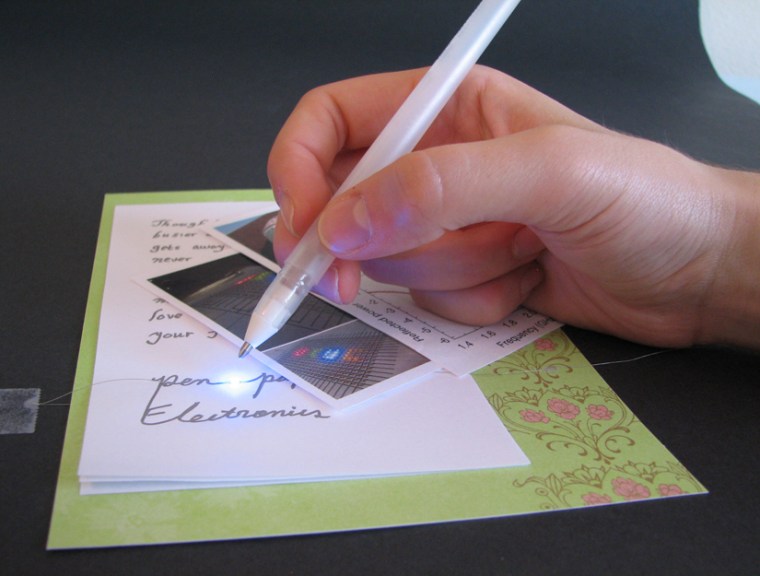Rollerball pens are getting a high-tech upgrade in the lab. Engineers from the University of Illinois at Urbana-Champaign recently replaced regular ink with a silver nanoparticle version that turns a pen into a handy tool for drawing functional circuitry on flexible surfaces.
"You’re limited only by your imagination as to what you could possibly do with this kind of tool," said Jennifer Lewis, the materials science and engineering professor who led the development. Her team includes electrical and computer engineering professor Jennifer Bernhard, as well as colleagues and students from several engineering departments at the university.
The idea to use a pen originated with Lewis’ students, who were searching for inexpensive ways to do patterning for electrodes. They seized on the rollerball pen because it’s cheap, portable and easy to use.
Upon removing the standard ink cartridge, the team replaced it with conductive ink synthesized in the lab from a concentrated mixture of silver particles, a liquid solvent and a small amount of polymer. The silver ink is formulated to have the same consistency as the commercial ink so it matches the flow behavior.
The students spent several months doing proof-of-concept experiments, using the pen for a range of applications, Lewis told Discovery News. They drew circuits for light arrays, 3-D antennas for radio-frequency identification and even electronic art.
"Whether you’re a soldier out on the front and you have to do a simple antenna to communicate, or whether you’re at home trying to do a high school science project," Lewis said, "there’s a lot of things one could do."
The first time the team showed off their pen, a visitor to the lab pulled out her business card and asked if they could mount an LED on it. Lewis drew a circuit, embedded a 9-volt battery with a resistor element, put down two electrodes and wired the LED to light up the area to be written on.
"No problem,” she said. “Within five minutes we’re done."
Although the silver nanoparticle ink was custom-made in the lab, it’s still relatively inexpensive. With silver fluctuating around $30 per ounce, Lewis estimates that the pen would probably costs about $50. A pen can draw numerous circuits, likely bringing the price to less than a dollar per use. Plus the ink doesn’t dry out. The team describes the pen in a recent issue of the journal Advanced Materials.
Yi Cui is an associate professor of materials science and engineering at Stanford University who has been working on creating paper-based electronics and energy storage devices with his colleagues.
"The simplicity of this idea is absolutely amazing," he said of the new pen. "You can think about it as not just the pen you’re holding — it can be a machine with a million pens writing at the same time."
Lewis said the pen could be commercialized between one to two years, but the group hasn’t taken steps in that direction yet. Currently they’re trying to push the technology further, getting the pen to write even finer features and experimenting with ionically conductive materials for low-cost battery applications.
"This is a much cheaper way of doing things on the fly," Lewis said. "You can just put the pen in your pocket, take some paper, and off you go."
